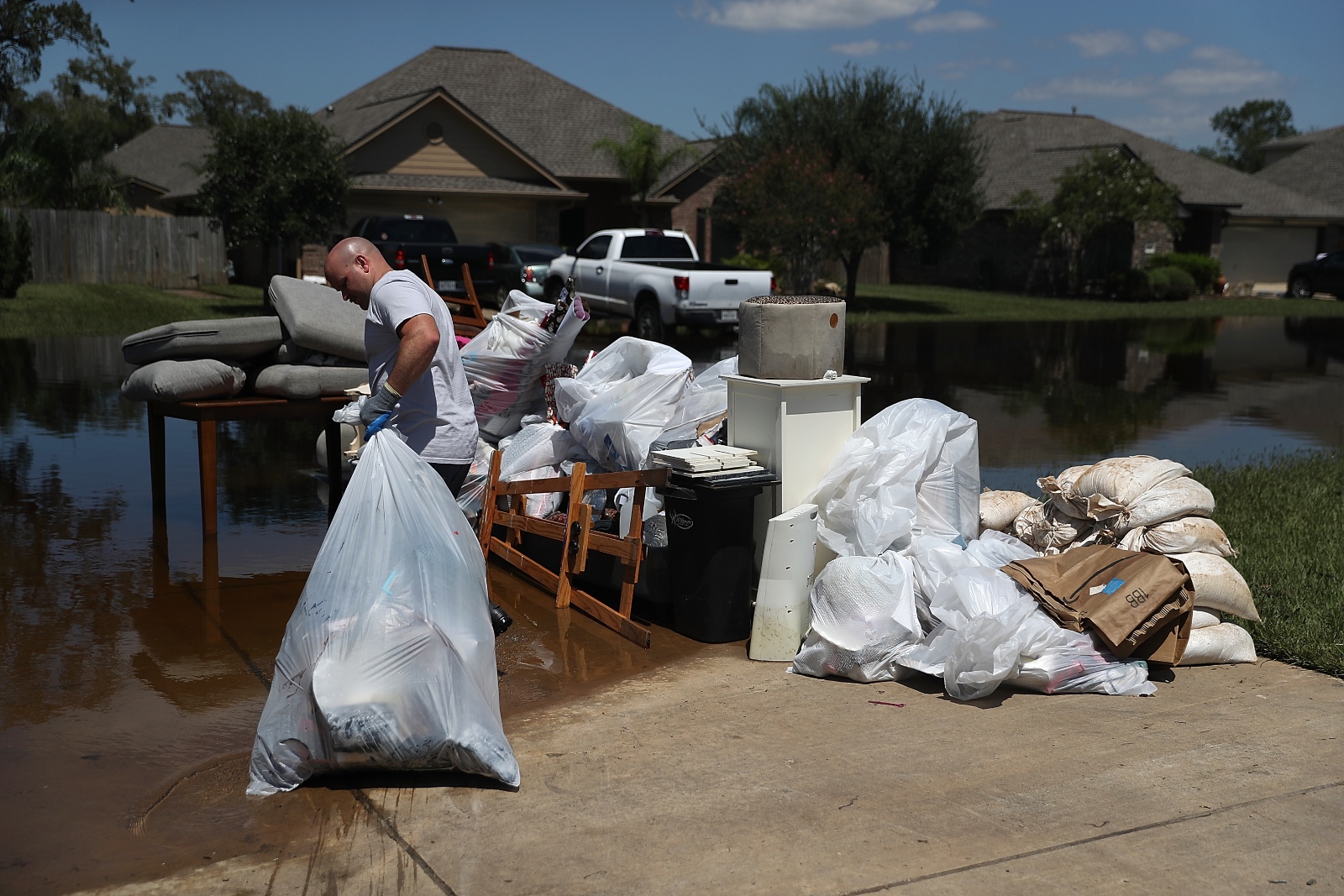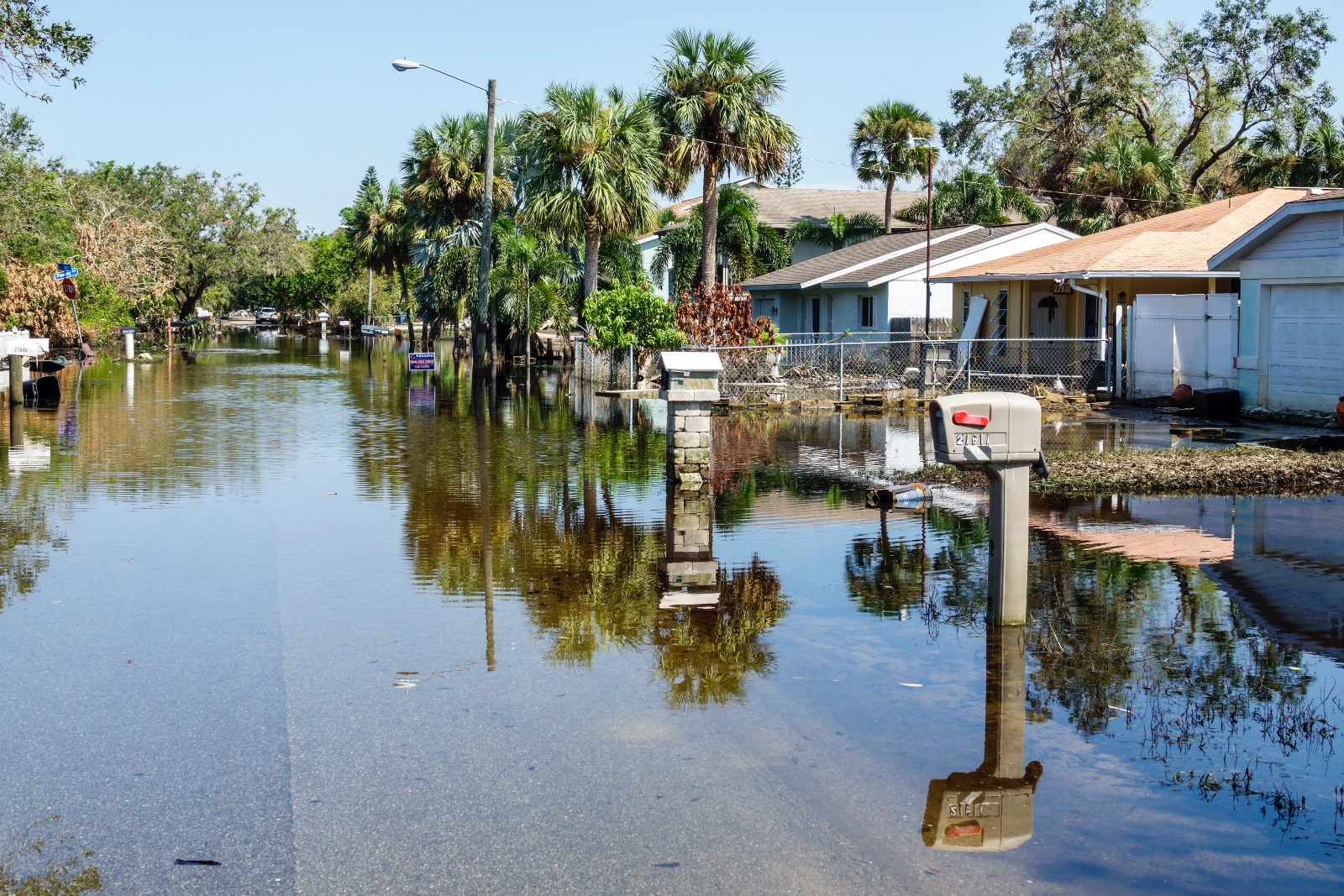This article is part of Ask Umbra’s guide on How to Build a Flood-Resilient Community.
Imagine you’re moving from Tampa, Florida, to Dallas, Texas. You own a house in Tampa, but you’re changing jobs, so you put the house on the market. Soon, potential buyers start showing up. You tell them about the nice neighborhood, the good restaurants nearby, and the community pool — but there’s one thing you hesitate to mention: The house flooded four years ago during a hurricane, ruining the living room. You fixed everything like a good owner should, but you also know that it could happen again. The storms seem to be more frequent in recent years, and more severe.
You have to sell the house in the next few months before you move to Dallas, and you’re worried about scaring off buyers. Your real estate agent suggests that you don’t mention the flood, especially since the house has been fixed and there are no structural defects.
What do you do? Do you have a responsibility to discuss the flood with would-be buyers, even if it means scaring them off? Or can you omit unflattering information that hasn’t even left an enduring mark on the property? After all, the flood was years ago. Where do your ethical obligations end?
When a homeowner puts her house on the market, she does have a legal obligation to disclose certain facts and risks to potential buyers. These disclosure obligations vary by state, but the most common ones apply to invisible hazards like lead paint and asbestos. Many states also require sellers to disclose if their home has been the site of a murder, or even if it has a reputation for being haunted.
When it comes to disclosing flood history, though, there’s no federal mandate, and state requirements are spotty. More than one-third of states have no flood disclosure laws whatsoever, and a few more have laws that experts deem too weak or too vague. These laggards include Florida, New York, and New Jersey, all of which rank in the top five states with the largest coastal populations. Other offending states include population centers like Virginia and Georgia, plus states like Missouri and Maryland with long histories of riverine and ocean flooding.
To make matters worse, homeowners who live in these states don’t have any way to find out whether a home has flooded. Members of the public can search the flood map database of the Federal Emergency Management Agency, or FEMA, to find out whether a home is inside a designated flood zone, and thus whether it requires flood insurance. However, simply being inside a flood zone doesn’t mean a home has ever flooded, and there are plenty of homes outside these zones that see frequent and significant water damage. When Hurricane Harvey slammed into Texas, for instance, more than half of all damaged homes were outside FEMA flood zones.

Due to federal privacy regulations, only the current owner of a home can request to see a home’s flood claim history. This means that, unless there’s a state law mandating disclosure, the seller of a home can leave that information out of her conversations with a potential buyer, and the buyer will remain in the dark until she signs the last paperwork and becomes the owner of a home herself. There are some independent tools, like the nonprofit First Street Foundation’s Flood Factor, that can shed light on an individual home’s risk, but a seller is under no more obligation to tell a potential buyer about sea-level rise projections than they are to tell them about the guy down the street who plays loud music on weekends.
Sea-level rise in South Florida is “not a prevalent thing for home sellers,”said Tony Scornavacca, a real estate agent who works in the Coconut Grove neighborhood of Miami, Florida.
That is in spite of the fact that Scornavacca has noticed water levels around Miami Beach rise around a foot over the course of his adult life. But most buyers in the city’s beachfront neighborhoods aren’t worried. “For the wealthy who want a waterfront property, flooding is a low priority on the list of concerns,” he said.
Even so, Scornavacca believes that home sellers and their agents have an ethical obligation to talk about flooding. Florida law requires sellers to disclose “known defects,” but if all the damage from a flood has been repaired, that requirement is moot — and there is no legal requirement to talk about the potential for future flooding.
“If a seller said to me, ‘Listen, we have slight flooding here, but let’s not mention that to the buyers,’ I’m gonna say, ‘I’m sorry, I can’t work with you,’” he said. “Some realtors will just say, ‘Okay, we won’t tell anybody.’”
These concerns aren’t just academic: There is already a great deal of evidence that information about flood history and climate vulnerability affects a home’s value. When Congress raised flood insurance rates back in 2012, coastal property markets started to falter, prompting an outrage that soon led lawmakers to roll back their rate hikes.
In Florida, meanwhile, researchers have found that home values in areas most vulnerable to sea-level rise are growing more slowly than home values in less vulnerable areas. In many of these at-risk areas, the overall number of home sales has fallen, which in many cases is a prelude to a crash in value. One nationwide study, meanwhile, found that flood-prone properties are overvalued by about $34 billion because the market hasn’t accounted for potential flood risk. As buyers grow more wary of risks related to climate change, some researchers believe that the most vulnerable homes might lose so much of their value that they become impossible to sell.

Such issues aren’t deeply concerning at the moment, because the overall housing market is so hot. Demand for homes has exploded since the COVID-19 pandemic began, even as supply-chain issues have caused a slump in the number of new homes being built. That means that many homes are selling for tens or hundreds of thousands of dollars above asking price. In a market where some buyers are offering to name their children after home sellers if it means they can make a deal, the fact that a home has flooded in the past might not be a deal breaker. The froth of current demand might make up for the value hit you take from mentioning a past flood. In looser markets, though, climate factors might depress home values enough that some sellers are forced to sell below what they bought for, giving them every incentive not to disclose flood risk.
When homes lose value, people lose money. For many homeowners, those losses can be ruinous. All the same, the revaluation of property markets that are vulnerable to climate change is an essential step toward climate adaptation. Given that sea levels are poised to rise around a foot by 2050, it’s safe to say that a great deal of coastal property is overvalued right now. If a given house will be underwater at high tide in two decades, it’s hard to justify asking a buyer for $1 million to take it off your hands.
If prices fall in a given area to reflect future risk, that sends a signal to potential buyers to stay away. It also opens up the area to interventions such as government-sponsored home buyouts. Information symmetry might have negative consequences for individual homeowners, but it leads to a fairer market.
“Ideally, it wouldn’t be the homeowner’s responsibility to do that,” said Miyuki Hino, a professor at the University of North Carolina at Chapel Hill who has studied the effects of flood risk disclosure on property values. “There should be easy-to-access information from other sources [than the seller]. The goal should be to take that decision burden off of the sellers’ shoulders.” Hino’s research has found that floodplain properties in the U.S. are overvalued by tens of billions of dollars, but that the valuation gap is smaller in states that have strict disclosure rules.
We hear a lot about how individual actions can’t solve climate change, but the owners of vulnerable homes are some of the few people who face a binary moral choice about how to respond to the climate crisis. It would be difficult to deny that revealing a home’s flood risk is the right thing to do. For one, it helps nudge a property market toward information symmetry. But there is also something to be said, however touchy-feely, for being kind enough to the buyer of your property not to place them blindly in the path of enormous home repair costs, or even financial ruin.
Of course, doing the “right thing” can also mean taking a significant financial hit. This is why so many people don’t do it. Different homeowners will have varying abilities to absorb such a hit, and admittedly some may not be able to afford it.
There may be a way to square this circle, although it’s still not without some cost for the owners of flood-prone properties. There are plenty of steps that individual homeowners can take to protect their homes from flooding, from installing flood vents to planting water-absorbing grasses. For homes that are right on the water, there’s the option of installing living shorelines of marsh vegetation, which can soak up waters from high tide.
In the most dramatic cases, the federal government offers grants to assist with elevating one’s home on stilts or a slab, an expensive but effective long-term solution. Thousands of people in states like Louisiana have elevated by a few feet in an effort to keep their homes floodproof and marketable. (It’s not entirely a coincidence that the state has one of the strongest disclosure laws in the nation.) All these interventions do is shift the cost burden up a little bit, so that homeowners spend to make their homes more resilient rather than take a financial hit at the moment they sell.
Hino also cites federal home buyouts as a potential solution to the problem. She notes that many people who participate in buyout programs like the one run by the Federal Emergency Management Agency say they don’t want to pass their flood-prone home to someone else. These programs are very limited, though: FEMA typically only deploys buyouts when local governments apply for them after major disasters. As a result, the agency has only purchased around 40,000 homes over the course of three decades. Most owners of flood-prone properties don’t have access to buyouts and instead have to retail their flooded homes on the private market. For now, at least, the difficult decisions aren’t going away.
“Ideally, for those homeowners that would feel better if people didn’t live in that same house, they would have an option to do what they feel is the right thing without hurting themselves financially,” Hino said. “And I think that doesn’t really exist all that often right now.”



